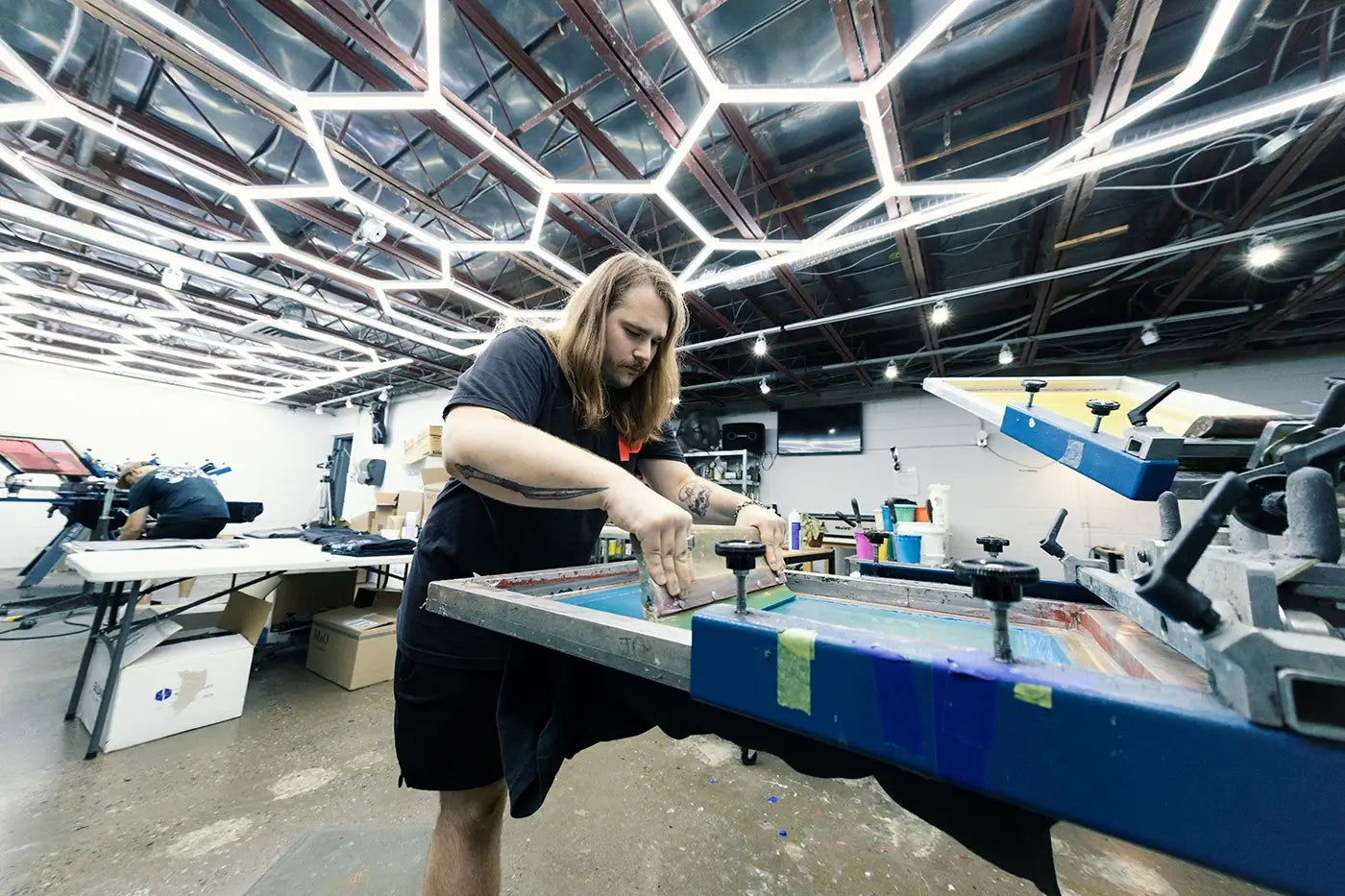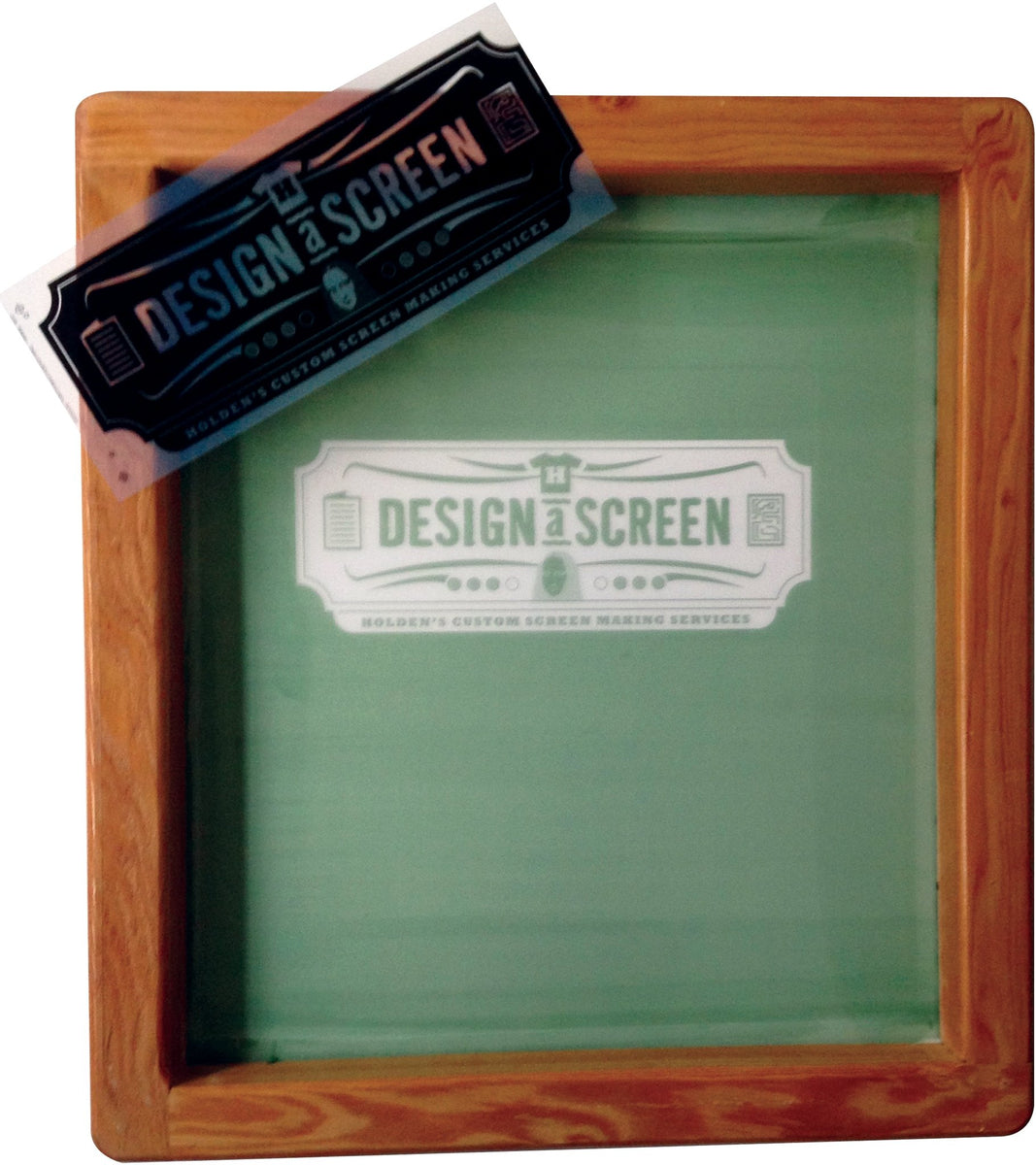Fast Turnaround Custom Screen Printing for Events
Fast Turnaround Custom Screen Printing for Events
Blog Article
Mastering Silk Display Printing: Tips and Tricks for Creating Stunning Designs
If you're wanting to understand silk screen printing, you'll require greater than just enthusiasm. It requires a solid understanding of techniques, the right devices, and thorough prep work. You'll discover just how to prepare your art work and take on typical concerns that can develop during the process. By the end, you'll prepare to create stunning styles that show your distinct style. Initially, let's explore the vital basics that lay the groundwork for your success.
Comprehending the Basics of Silk Display Printing
Silk display printing, typically called screen printing, is a functional technique for transferring styles onto various products. You'll locate it's optimal for publishing on fabrics, paper, plastic, and a lot more. The procedure includes developing a pattern, or display, that permits ink to go through just in specific areas, generating vibrant and clean designs.
To obtain started, you'll require to prepare your artwork, guaranteeing it's in an appropriate format. screen printing kit. You'll coat your screen with a light-sensitive emulsion and expose it to light once you have actually obtained your design all set. This action produces a pattern of your design on the screen
After rinsing the unexposed solution, you're established to publish. Align your display over your product, apply ink, and make use of a squeegee to push the ink with the display. It's all regarding method and patience, so don't hesitate to experiment and fine-tune your method as you go.
Important Devices and Materials You'll Require
To begin with silk screen printing, you'll require a couple of basic products like screens, squeegees, and ink. When you fit, you can explore innovative tools that improves your printing high quality and performance. Let's discuss what you'll call for to assure your tasks succeed from the beginning.
Basic Silk Screen Materials
Beginning on a silk screen printing job calls for a couple of essential tools and materials to guarantee your success. You'll require a silk display structure, which holds the mesh that moves your layout. A squeegee is essential for pushing ink via the screen onto your substrate. Do not neglect the ink itself; pick shades that match your layout and the product you're publishing on. A source of light is important for exposing your screen, together with emulsion to create your stencil. You'll additionally need an appropriate work area, preferably one that's well-lit and complimentary from dust. Supply up on cleansing materials to keep your devices and keep your displays in excellent condition. With these basics, you're all set to dive right into your project!
Advanced Printing Devices
When you're all set to take your silk display printing to the next degree, purchasing innovative printing equipment can make a considerable distinction. A high-grade display printing machine is crucial; seek a multi-color press that permits specific registration and quicker production. You'll likewise wish to upgrade to an extra reliable exposure device to guarantee your styles are dynamic and sharp.
Think about buying a dependable warmth resource, like a conveyor dryer, for even treating of inks. Do not forget specialized inks; water-based and discharge inks give exceptional results on numerous materials. An excellent collection of mops and solution scoop coater will improve your process, offering your styles that professional side.
Preparing Your Art Work for Printing
Preparing your artwork for silk screen printing is vital to achieving vivid, expert outcomes. Begin by confirming your style is in the appropriate format-- vector data like.AI or.EPS work best.
When your data prepares, develop a separate layer for every shade in your layout. This'll make it less complicated throughout the printing process. Don't fail to remember to include enrollment marks to line up colors appropriately.
Likewise, take into consideration the mesh matter of your display; better information may require a higher mesh matter. Finally, conserve your artwork with a resolution of at the very least 300 DPI to assure crisp prints. By adhering to these steps, you'll establish on your own up for a successful printing experience and bring your layouts to life perfectly.
The Screen Printing Process: Step-by-Step
Currently that you've prepared your art work, it's time to focus on the screen printing procedure itself. You'll start by preparing your display, guaranteeing it's prepared for the ink application. From there, you'll check out different printing techniques to attain the finest results for your job.
Preparing Your Display
Getting your display prepared is a vital step in the silk display printing process. Initially, clean the display thoroughly to get rid of any type of oil, dust, or deposit. Make use of a degreaser like this and rinse it well to ensure a smooth surface for your solution. Next, apply a light layer of solution uniformly throughout the display making use of an inside story coater. Make sure to do this in a poorly lit area to stop premature exposure. Allow the emulsion to completely dry entirely before exposing it to your design. Once dry, position your openness on the screen and make use of a light to expose the style. After exposure, rinse the unexposed solution, and you'll have your screen prepared for printing.
Printing Techniques Discussed
As soon as your display prepares, you can plunge into the exciting process of printing. Place your screen on your substrate-- whether it's fabric, paper, or another material. Safeguard it to stop any type of motion. Next, pour your ink onto one side of the screen and use a squeegee to draw the ink across the style. Apply even pressure to guarantee the ink permeates via the mesh. Raise the display carefully to disclose your print. If you're layering shades, allow each layer dry before applying the next. Clean your screen quickly to stop ink from drying out and obstructing the mesh. With practice, you'll understand the subtleties of pressure and timing, which will assist you attain crisp, lively designs.
Tips for Getting Vibrant Colors
While accomplishing vivid colors in silk screen printing may appear challenging, you can conveniently elevate your styles with a few crucial methods. Initially, choose high-grade inks specifically created silk screen printing; they provide much better coloring and protection. Mixing inks effectively can likewise boost vibrancy-- try out proportions to discover the excellent blend that stands out.

Lastly, don't ignore curing your prints correctly. Correct heat establishing warranties the shades bond with the material, preserving their vibrancy in time. By executing these methods, you'll produce spectacular, appealing styles that absolutely shine.
Repairing Common Printing Concerns
Also with dynamic colors in your layouts, silk display printing can sometimes present difficulties. One common problem is ink bleeding, which commonly takes place when you utilize excessive ink or don't allow the previous layer dry totally. To prevent this, make use of a squeegee with see this just the right stress and ensure each layer is dry prior to including much more.
If your style isn't lining up properly, verify your registration marks and make changes to your screens. Tidy your screens extensively before starting your print run.
Last but not least, if the ink isn't adhering well to the textile, take into consideration the textile type and the treating procedure. See to it you're making use of the best ink which you're treating it at the proper temperature level. Fixing these common issues will certainly assist you attain spectacular outcomes.
Experimenting With Results and strategies
Trying out different methods and effects can elevate your silk screen printing projects to brand-new heights. Don't be scared to push limits! Try layering colors for deepness; overlapping shades produces unique blends that catch the eye. You can likewise play with structures-- making use of different squeegee methods or integrating products like brushes or sponges adds dimension to your prints.
Think about utilizing specialty inks, such as glow-in-the-dark or metallic, to provide your styles an unforeseen twist. You might even explore stenciling, where you can cut elaborate styles for sensational impacts.
Don't ignore substrate variations! Printing on fabrics, timber, or paper can generate different results that enhance your task's feel.
Ultimately, keep a journal of your experiments. Recording your failures and successes will lead your future productions and assist you fine-tune your style. Welcome the process, and delight in the trip of finding what works best for you!
Regularly Asked Concerns
How Do I Tidy and Preserve My Screen Printing Equipment?
To cleanse and maintain your display printing equipment, frequently scrub displays with a suitable cleaner, clean mops after use, and shop every little thing in a Check This Out completely dry, dust-free environment. Maintaining things tidy warranties much better prints and longer-lasting tools.

Can I Print on Products Apart From Material?
Think about using wood, plastic, or paper. Simply make certain your screens and inks are compatible with those surfaces for the ideal outcomes.
What Is the very best Way to Store Displays and Inks?
To save inks and screens efficiently, keep screens upright in a trendy, dry location, and cover them to prevent dust. Shop inks in airtight containers, away from direct sunlight, to maintain their high quality and uniformity.
Exactly how Do I Choose the Right Mesh Count for My Project?
Picking the right mesh count depends upon your layout's detail and ink kind. For fine information, go higher, like 200 mesh (screen printing kit). For strong designs, a lower count, around 110, works best. Experiment to locate your ideal match.
What Are the Ecological Impacts of Silk Screen Printing?
Silk display printing can have ecological impacts, like chemical waste and water usage. You can minimize these by using environmentally friendly inks, reusing materials, and effectively disposing of chemicals to reduce your job's ecological impact.
Silk screen printing, commonly called screen printing, is a flexible technique for moving designs onto different products. Align your display over your material, apply ink, and make use of a squeegee to press the ink through the screen.To obtain started with silk display printing, you'll require a few basic supplies like displays, mops, and ink.When you're all set to take your silk screen printing to the following degree, investing in innovative printing devices can make a significant difference.Obtaining your display all set is an important step in the silk screen printing procedure.
Report this page